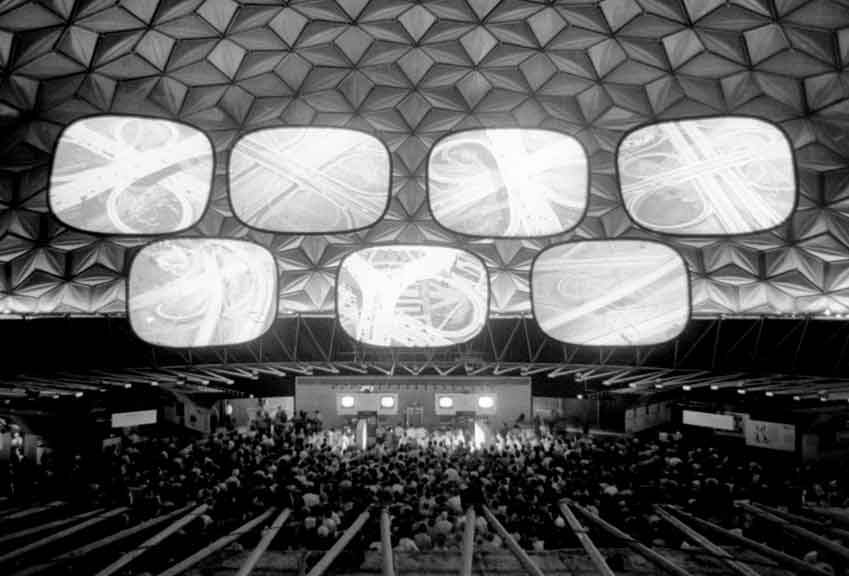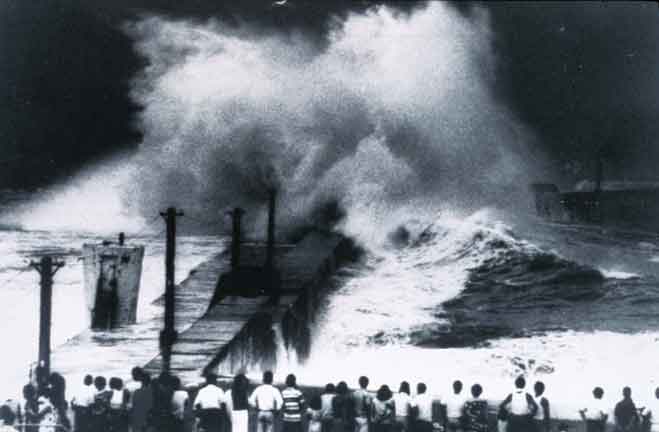« Face to Face, Features
“But I could be wrong.” Interview with Trevor Paglen
Last September, an artwork was sent into eternity. The artwork is an ultra-archival disc, micro-etched with 100 photographs and encased in a gold-plated shell; eternity was reached thanks to the communications satellite EchoStar XVI, launched from Kazakhstan into geostationary orbit with the disc mounted to its anti-earth deck. EchoStar XVI will broadcast more than 10 trillion images over its 15-year lifetime; then it will use the last of its fuel to enter a slightly higher orbit, the place where satellites go to die. But if they stop broadcasting, geostationary satellites never decay. They float aimlessly outside of the planet’s atmosphere, so far from Earth that they are preserved forever. They will outlive life on Earth, and the Earth itself, orbiting around it for the next four or five billion years, until the Sun expands into a red giant.
The same will happen to The Last Pictures, the artwork that artist, writer and researcher Trevor Paglen has sent into eternity with the help of Creative Time, which commissioned and supported the project during the five years of its development; the EchoStar Corporation, the premier global provider of satellite operations, which donated both the services of its engineers and space on its next satellite; and MIT, where the research and development process for the project actually took place.
Interviewing Trevor Paglen about The Last Pictures is not an easy task. Any answer generates new questions, and any question can barely sum up the number of issues raised by the project. I did my best, but Paglen did better job explaining the concept in his book, published by the University of California Press, that is definitely worth adding to your cart.
By Domenico Quaranta
Domenico Quaranta - How did this project start? Did you conceive it, or is it the result of a commission?
Trevor Paglen - I have been interested in satellites for a long time. A number of years ago, I had a conversation with an amateur astronomer friend of mine named Ted Molczan about the decay rates of satellites in various orbits. When I started looking at geosynchronous spacecrafts in orbits around 36,000 kilometers I realized that they never decay. I asked my friend if this were true and he said, ‘Yes, I think about them as artifacts.’ When Creative Time asked me to propose a project involving space, I remembered these ‘artifacts’ and decided that we should mark one of them with some kind of cultural imprint.

The Last Pictures, 2012, artifact. Ultra-archival image disc inside gold plated aluminum shell, 5” x 5”. All images are courtesy of Creative Time.
D.Q. - What kind of criteria did you follow for the selection of images?
T.P. - I worked with a fairly large group of scientists, anthropologists, philosophers and artists to brainstorm what the image collection should be and ran a research seminar for six months at Creative Time, where a group of five researcher assistants and myself collected and discussed thousands of images for possible inclusion. At the end of the day, I realized that we were not creating an archive so much as a poem or a silent film, a montage, and that the images should be informed by that.
D.Q. - The nature of this research process and the involvement of so many people turns The Last Pictures into a tentatively ‘objective’ portrait of humanity in the 20th century. How much is it also Trevor Paglen’s personal view on it?
T.P. - The Last Pictures is certainly not meant to be a ‘portrait of humanity’ and is far from ‘objective.’ I always understood that either idea would be absurd at best and would almost certainly become some sort of neo-colonialist gesture. The project began with the following question: ‘How is it that we knew exactly how we were going to kill ourselves and went ahead with it all anyway?’ This is a very different directive than thinking about what a ‘portrait of humanity’ might be. In fact, for the majority of the research time, we had decided to not include any images of humans at all, a decision I changed towards the end of the selection process. As for my own “voice” in the project, I’m sure it’s everywhere in the sense that any person would approach a similar project so differently as to come up with an entirely different piece. Having said that, a lot of people contributed ideas and thoughts to the project, and there are a great deal of other people’s ideas in the work.

The Last Pictures. Soyuz Fg Rocket Launch, Baikonur Cosmodrome, Kazakhstan. One of one hundred images nano-etched on an ultra-archival disc in perpetual Earth orbit, 2012, 5” x 5”.
D.Q. - And what did you end up with? I didn’t see the book yet, but the press folder seems to include pretty anonymous images, both in terms of authorship and celebrity, and with different levels of quality.
T.P. - I think that in the beginning of the project, I was imagining something like an archive of images, but over time the project evolved into a kind of visual poem or silent film. The images comes from a lot of different moments in time, but it’s not meant to be a historical survey. They tell a very impressionistic story about what happened to the humans, and why they disappeared.
D.Q. - How are the images stored and archived on the disc?
T.P. - The images are nano-etched into a disc of atomically stable silicon. They’re at an optical resolution, not unlike old microfiches in libraries. No decoding is necessary, at least from a technical standpoint.

The Last Pictures. Greek and Armenian Orphan Refugees Experience the Sea for the First Time, Marathon, Greece. One of one hundred images nano-etched on an ultra-archival disc in perpetual Earth orbit, 2012, 5” x 5”.
D.Q. - Did you store contextual information on the disc? If so, in which form?
T.P. - There is no contextual information on the disc itself. I was very much imagining them as ‘cave paintings’ for the future. In the book, there is quite a lot of additional information about the images. My hope is that the work tells two stories-one impressionistic and poetic, using only images, and another story that complicates the first and serves as more of a meta-commentary on images themselves. The second story is only in the book but I think is implicit in the image collection on the disc.

The Last Pictures. Glimpses of America, American National Exhibition, Moscow World’s Fair. One of one hundred images nano-etched on an ultra-archival disc in perpetual Earth orbit, 2012, 5” x 5”.
D.Q. - How is the book, which is talking to the present, different than the disc sent into space and talking to the future?
T.P. - The book is very much for the present. It’s a series of reflections on images, politics, geography, technology and our relationship to nature. I think those stories are in the images as well, but the book spells it out much more.
D.Q. - Is this a message to the future or to the present-a memorial for humanity, or a collection of things that we, in the first place, should remember?
T.P. - I believe it is all of the above. If there is a “message” to the collection, it is perhaps a visual poem about some of the extraordinary, self-destructive behaviors that characterize modern civilizations.
D.Q. - With this project, you are addressing an audience coming from a remote future. This reminds me of Michael Madsen’s documentary Into Eternity, which focused on attempts to warn future generations about the dangers of a huge nuclear waste underground repository. Did you explore similar issues during your research project?
T.P. - Absolutely. We looked a lot at the strategies used to mark nuclear waste storage sites for extremely long times, as well as the history of artifacts created for aliens (such as the Pioneer plaque), the history of universal languages such as Esperanto. But what was most useful to consider was cave paintings. I think that what we’ve done with this project is to make future cave paintings.

The Last Pictures. Typhoon, Japan, Early Twentieth Century. One of one hundred images nano-etched on an ultra-archival disc in perpetual Earth orbit, 2012, 5” x 5”.
D.Q. - The issue of time seems to be crucial to this project. In your interview with Nato Thompson you define The Last Pictures as ‘a nonsense’ and a ‘frozen contradiction.’ You don’t think the disk will ever be found, seen and understood, and you seem skeptical about ‘grand gestures.’ But you did it, you placed it on an artifact expected to outlive life on Earth, and you did your best to make it as durable. This is extremely strong, and real. If I match this to your description of the project as a poem about our self-destructive behavior, I can’t resist to see this gesture as a powerful, maybe desperate, act of resistance, instead of a self-ironic meta-gesture.
T.P. - The Last Pictures is indeed a deeply paradoxical project. I agree with you that there are both of those tendencies in the work: a poem for a lifeless future, and a critical take on the present. It’s true that I do not think it will ever be found, or in the exceptionally unlikely event that it was found it would mean anything at all. But I could be wrong, and I definitely wanted to build the idea of me being wrong into the project as well.
D.Q. - The Last Pictures seems to show your faith in the long-lasting importance of images as a means of communication. How does the content of the disc relate to your work as an artist?
T.P. - I actually have very little faith in the possibility of communicating with images in the present, let alone the future. I am, however, extremely interested in the limits of representation and the relationship between that and the political. That has been a theme in all of my work and is central to this one as well.
D.Q. - The project also looks to me like a tribute to photography as the visual language of the 20th century. Does the archive include only photographs? If so, why? Do you think photography will be able to keep its role in the 21st century?
T.P. - The disc is mostly photography, but there is also drawing, painting, digital renderings and much more. I don’t really think of it so much as a strictly photo-project, but I think about photography a lot, and there are a number of references to photo history. Having said that, there are very few “iconic” images from photo history. Most of the images are images that a lot of photo people have not seen before. A great deal of them came from amateur photographers whose work has not been seen in the context of art photography.
Domenico Quaranta is an art critic and curator based in Italy. He has focused his research on the impact of the current techno-social developments on the arts. A regular contributor to Flash Art magazine, he has written, edited and contributed to a number of books, including Gamescenes: Art in the Age of Videogames (Johan & Levi Editore, 2006).



































Leave a Reply
You must be logged in to post a comment.